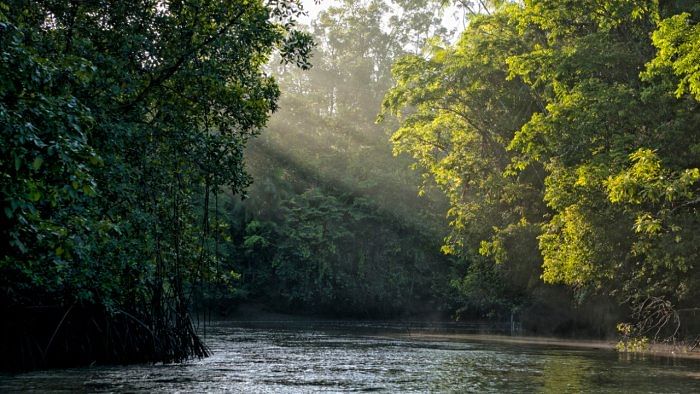
Rivers are natural waterways that carry with them water, nutrients and biodiversity. All ancient civilizations arose on the banks of rivers; some of the largest cities today exist along riverbanks. The relationship between rivers and cities is old, and in recent years, it has taken a turn for the worse. The populations of cities, especially in developing countries like India, is ever-increasing. Rivers adjoining these cities are seen as water providers at best, and channels for carrying sewage at worst. Urban river floodplains have also been affected by this changing relationship. The floodplain areas in most cities are either modified as real estate or have become highly degraded ecosystems due to sewage outfall and encroachments.
Water volume, quality, and floodplain areas in the urban stretches of rivers are rapidly consumed by the ever-expanding cities. The urban stretches of rivers are also the most polluted. As an example, the small 22-km stretch of the Yamuna in Delhi accounts for only 2% of the river’s length but contributes 80% of the total pollution load. This necessitates the rejuvenation of urban stretches of rivers, especially in case of megacities where the rivers are most affected. An order by the principal bench of the National Green Tribunal (NGT) in December 2019 paved the way for doing exactly that. In its order, the NGT has maintained that river floodplains must be managed by the forest department.
To enable this transition, the NGT directed the Central Pollution Control Board (CPCB) and the Ministry of Environment, Forest and Climate Change (MoEFCC) to develop guidelines for setting up biodiversity parks along rivers in India. A biodiversity park can be defined as a park created for reviving, restoring and maintaining the local biological diversity of an area. A biodiversity park is a novel concept that can help transform and restore urban river floodplains. The Yamuna Biodiversity Project, a pilot set up some years ago, has since helped revive the ecosystem services of the river floodplain in the northern stretch of the river in Delhi.
The CPCB has published guidelines for setting up biodiversity parks on river floodplains. Recognising that rivers in India have become “open sewers, particularly in urban stretches,” they provide theoretical and practical information for river rejuvenation along the floodplains. While the guidelines focus on all rivers in India, especially the Ganga, biodiversity parks can play a significant role in urban floodplain protection and restoration. Cities like Delhi already have a provision of “O-zone” in their masterplan. The “O-zone” is the floodplain area of the riverbed and is an area where construction of permanent structures is not permitted. With the introduction of the concept of biodiversity parks, this zone can now be transformed into a green landscape, thereby also contributing to urban forest cover.
A biodiversity park is a holistic concept to rejuvenate rivers and restore their water quality, volume, and floodplain. The park works with a three-pronged approach: restoring the degraded urban riverscapes, bioremediating of wastewater, and using floodplain to clean and store floodwater. Transforming urban river floodplains into biodiversity parks thus offers many benefits. Biodiversity parks can help clean rivers and riverbanks, provide habitat for urban biodiversity, help recharge groundwater, and maintain steady flow of water throughout the year.
Developing or maintaining one or more wetlands is integral to the setting up of biodiversity parks. Wetlands are often referred to as kidneys of the ecosystem because of their sustained capacity to filter pollutants. A biodiversity park is thus also able to act as a natural sewage treatment plant: It reduces the amount of wastewater entering the river.
Parks are essential components of any city and provide short-term green escapades for the residents. Biodiversity parks are an advanced version of parks, and the concept is developed in response to the need for river restoration. When deployed for floodplain reclamation and river restoration in cities, biodiversity parks are an excellent tool for promoting urban sustainability. Among other benefits, functional river floodplains act as carbon sinks. Biodiversity parks also help in climate-proofing cities by buffering floods. They are thus a useful climate change adaptation strategy against high-intensity short-term rainfall events -- which are becoming more and more frequent in urban areas.
Another useful benefit of biodiversity parks is their ability to connect the urban resident to nature and biodiversity by setting up nature interpretation centres. Informed citizens are more responsible stakeholders of the natural heritage of a city. Promoting environmental awareness and sensitization through biodiversity parks will contribute to long-term environmental protection and conservation.
There is a strong case for setting up biodiversity parks as part of urban development and to adapt to climate change. The sooner we do this, the better are our chances to secure a sustainable urban future.
(Singh and Rosencranz are Associate Professor and Dean, respectively, at Jindal School of Environment & Sustainability, OP Jindal Global University, Haryana)